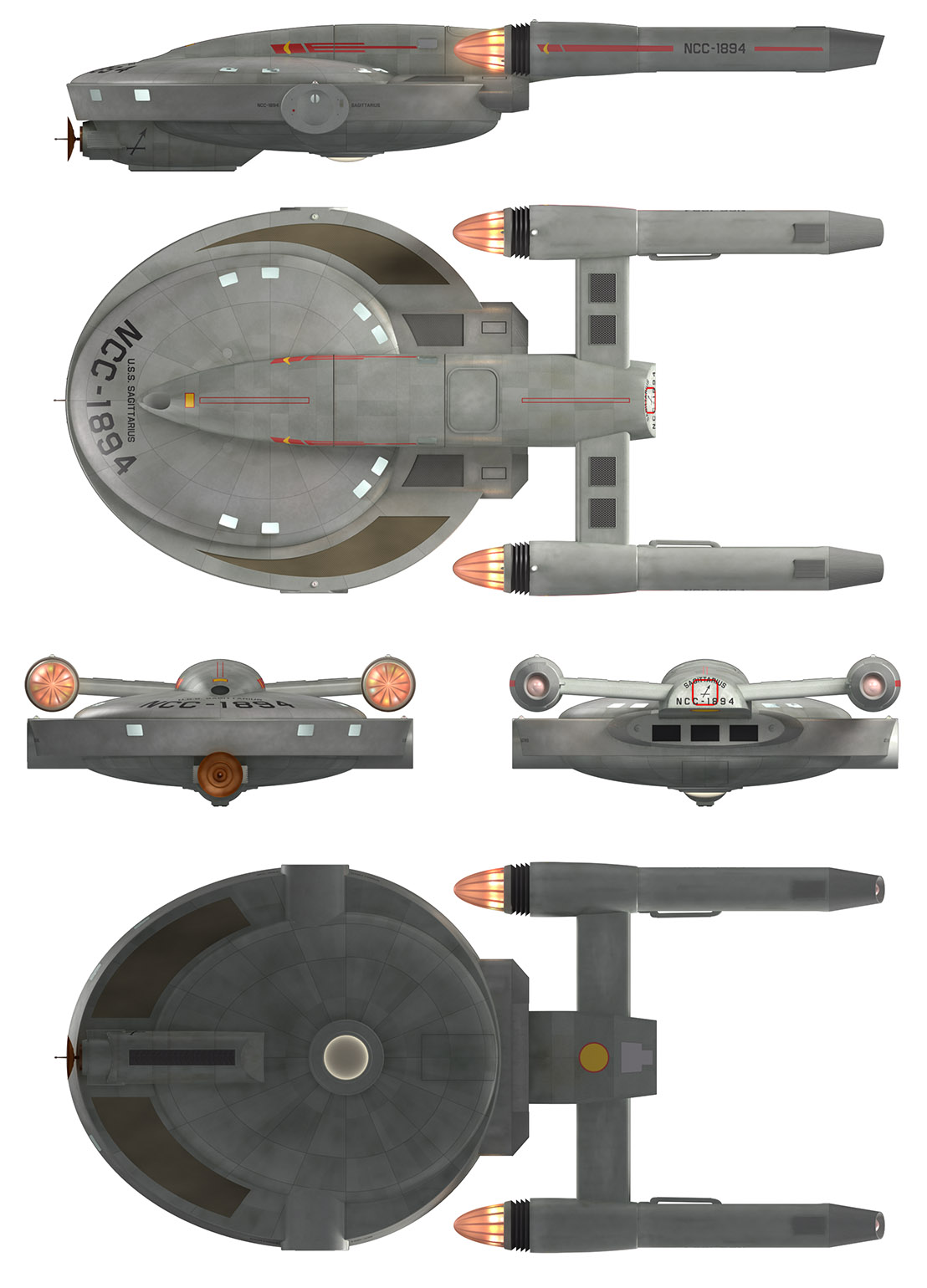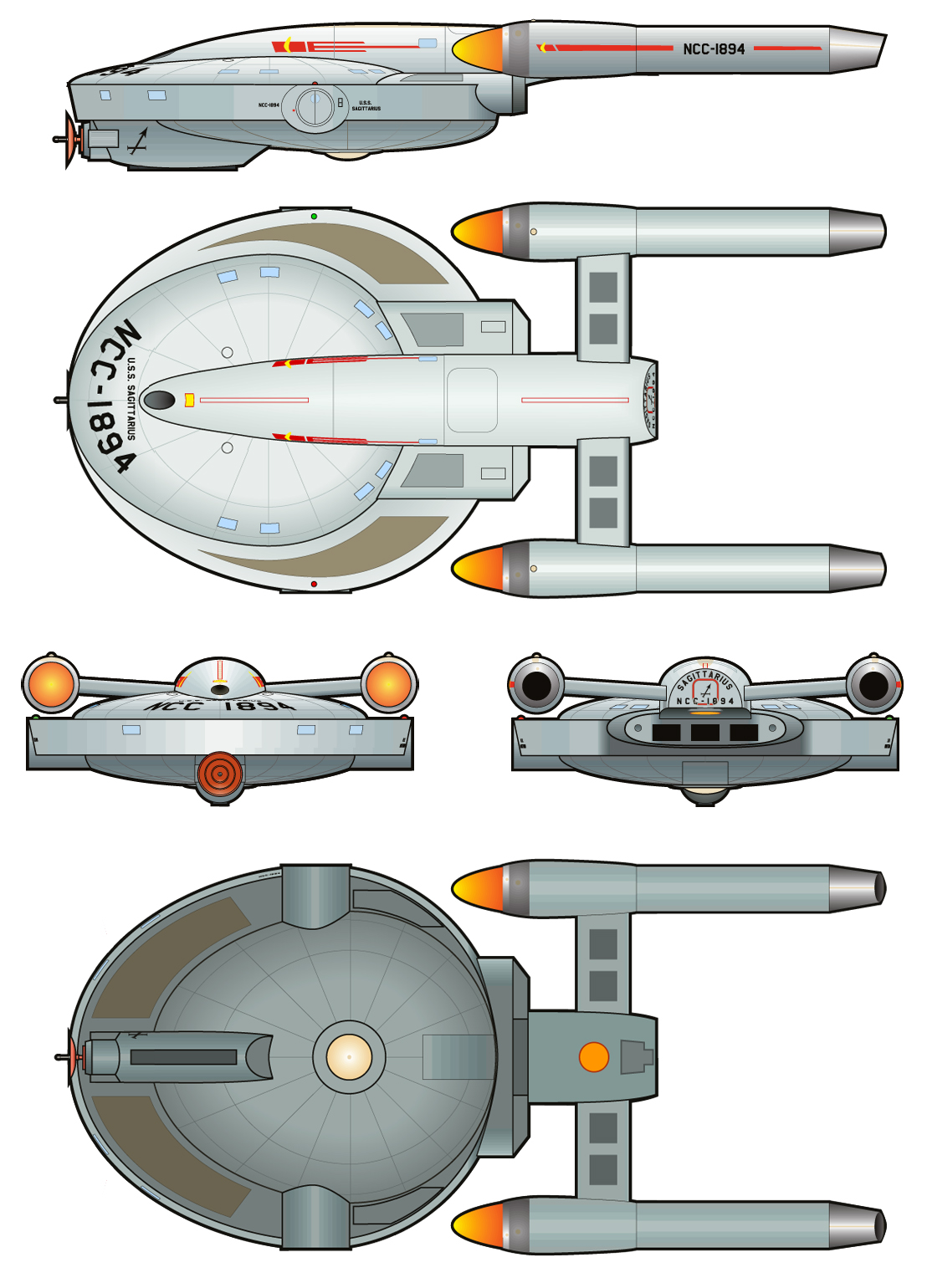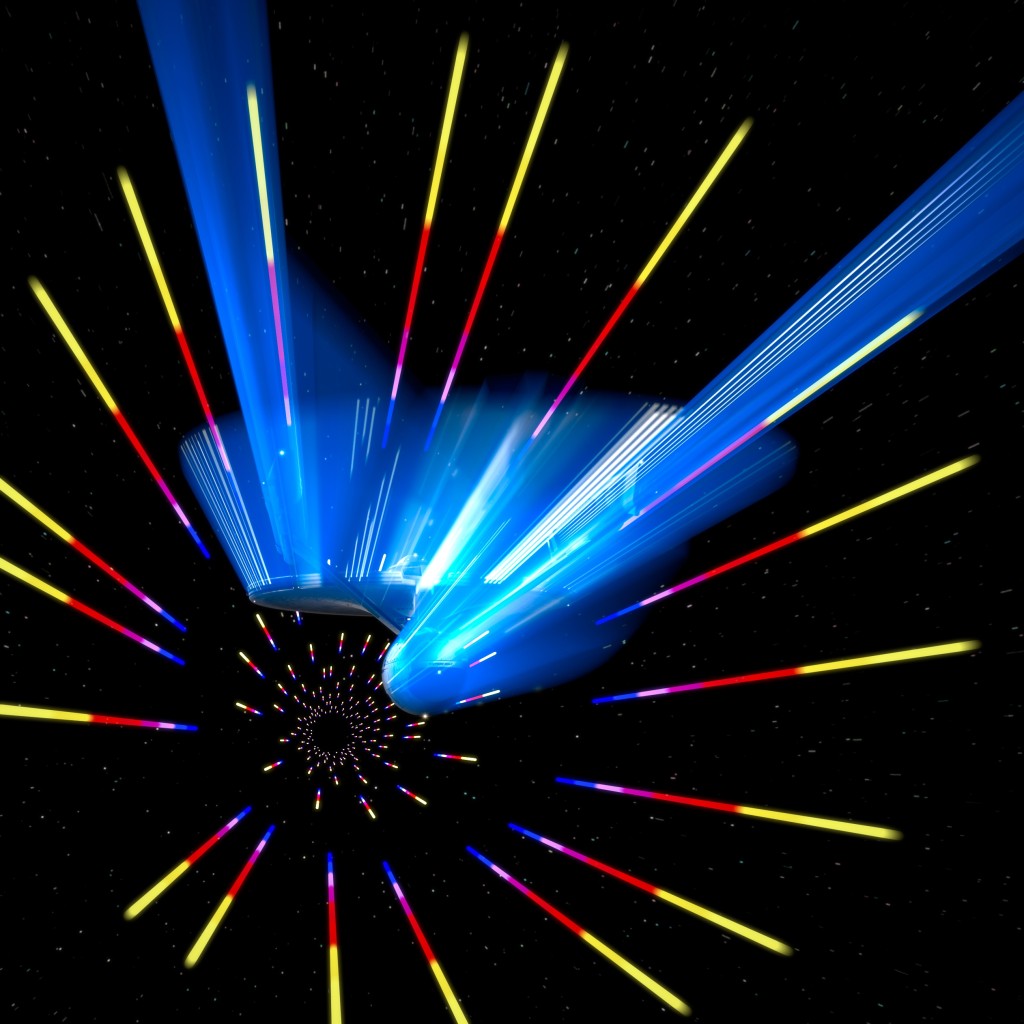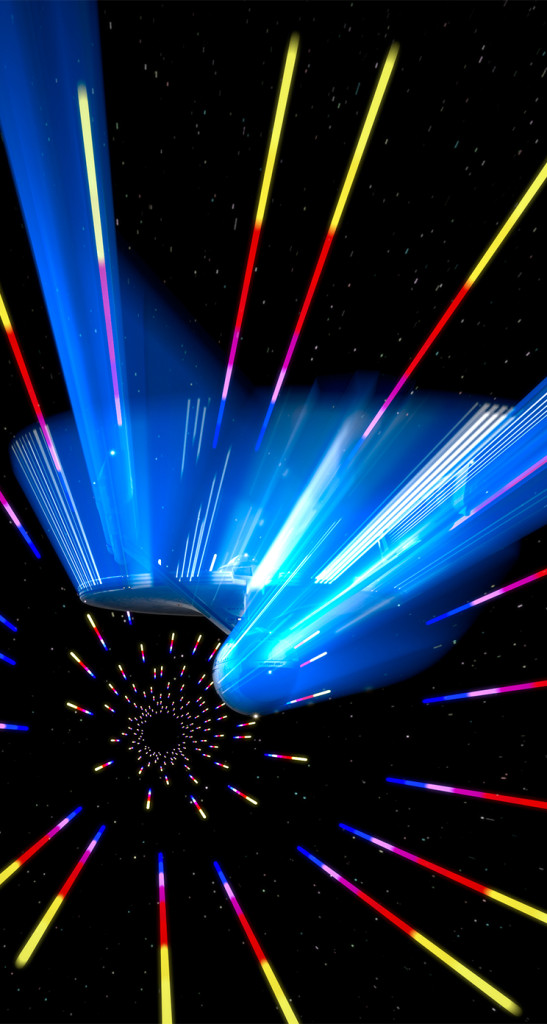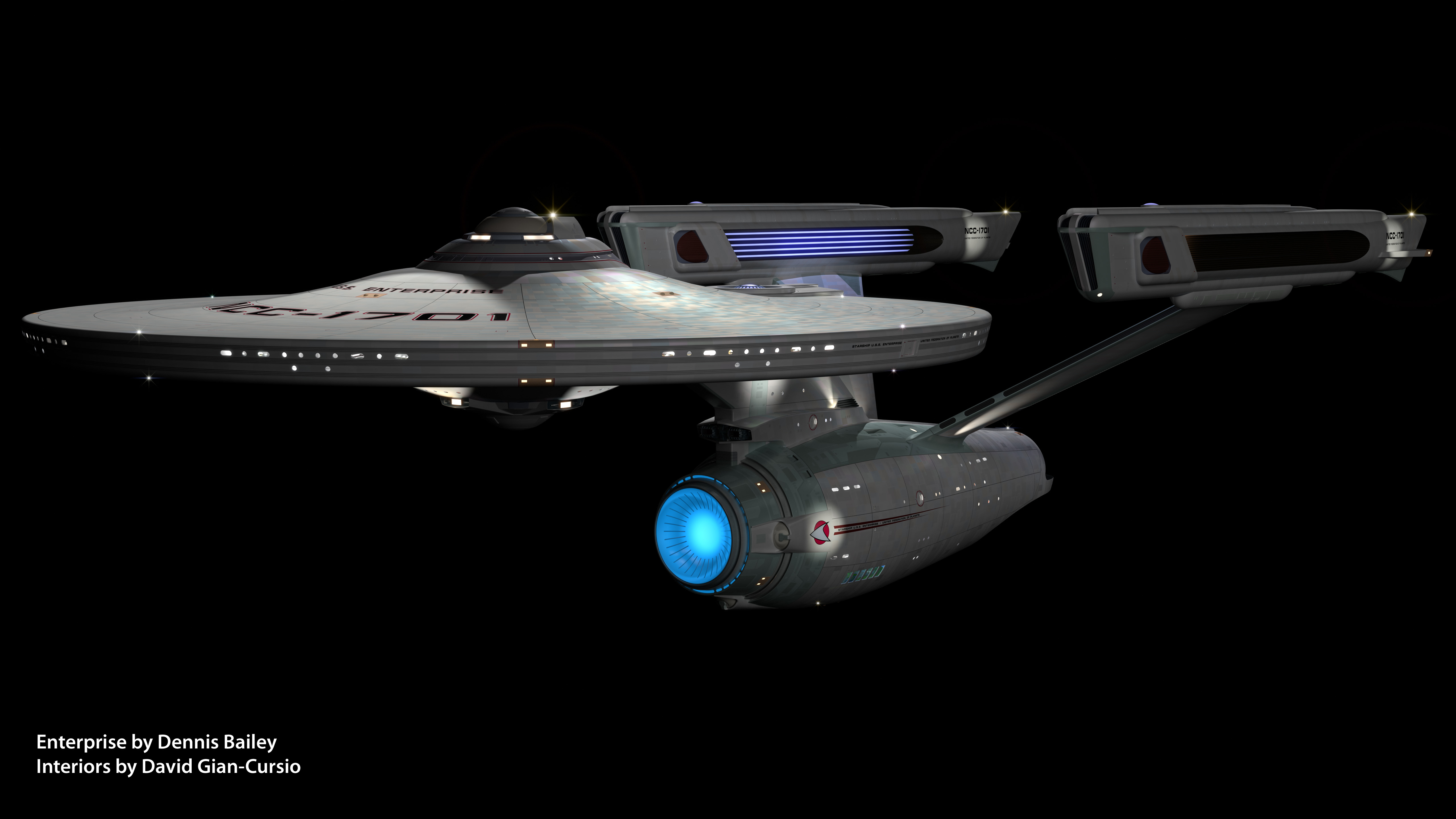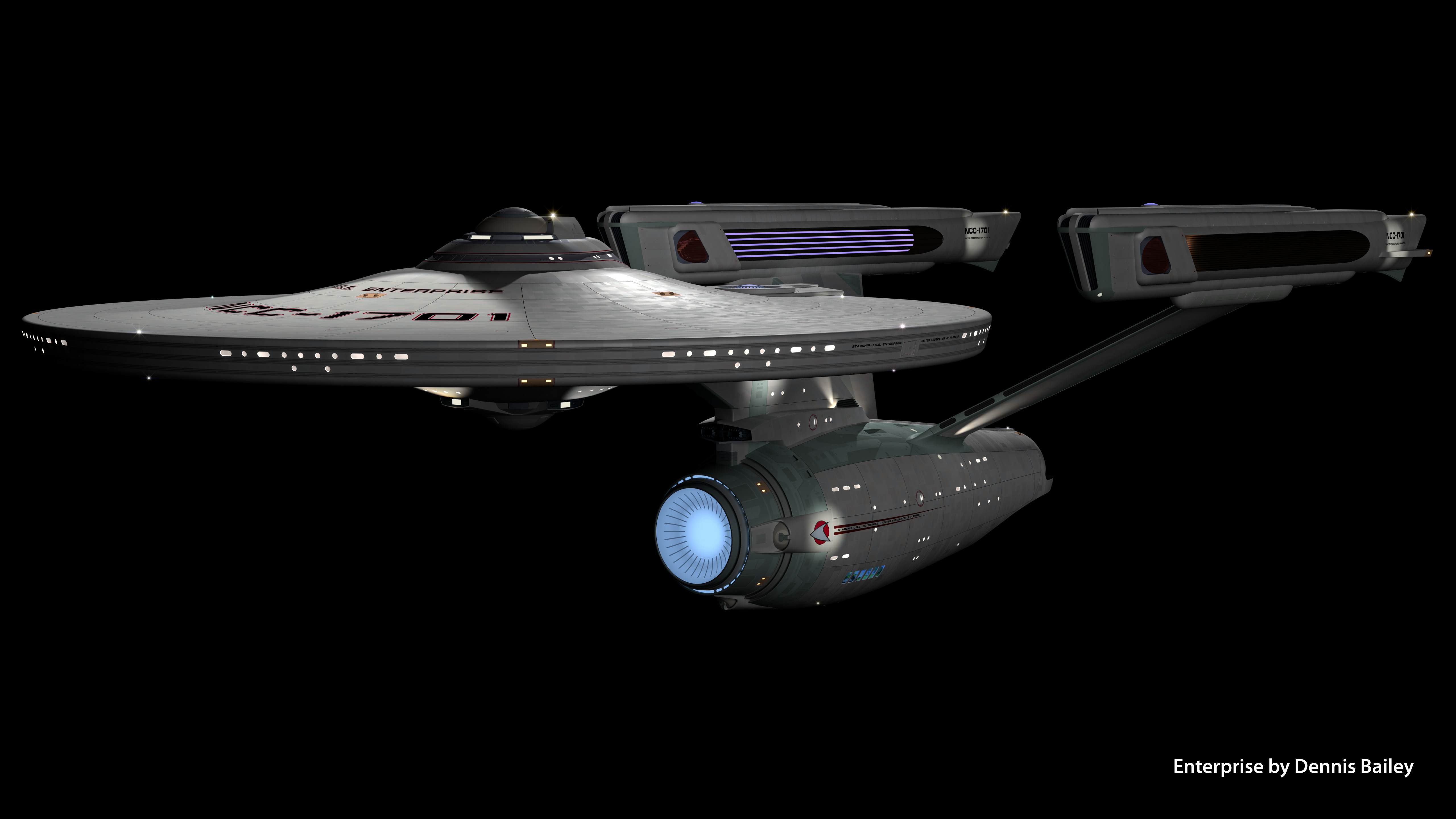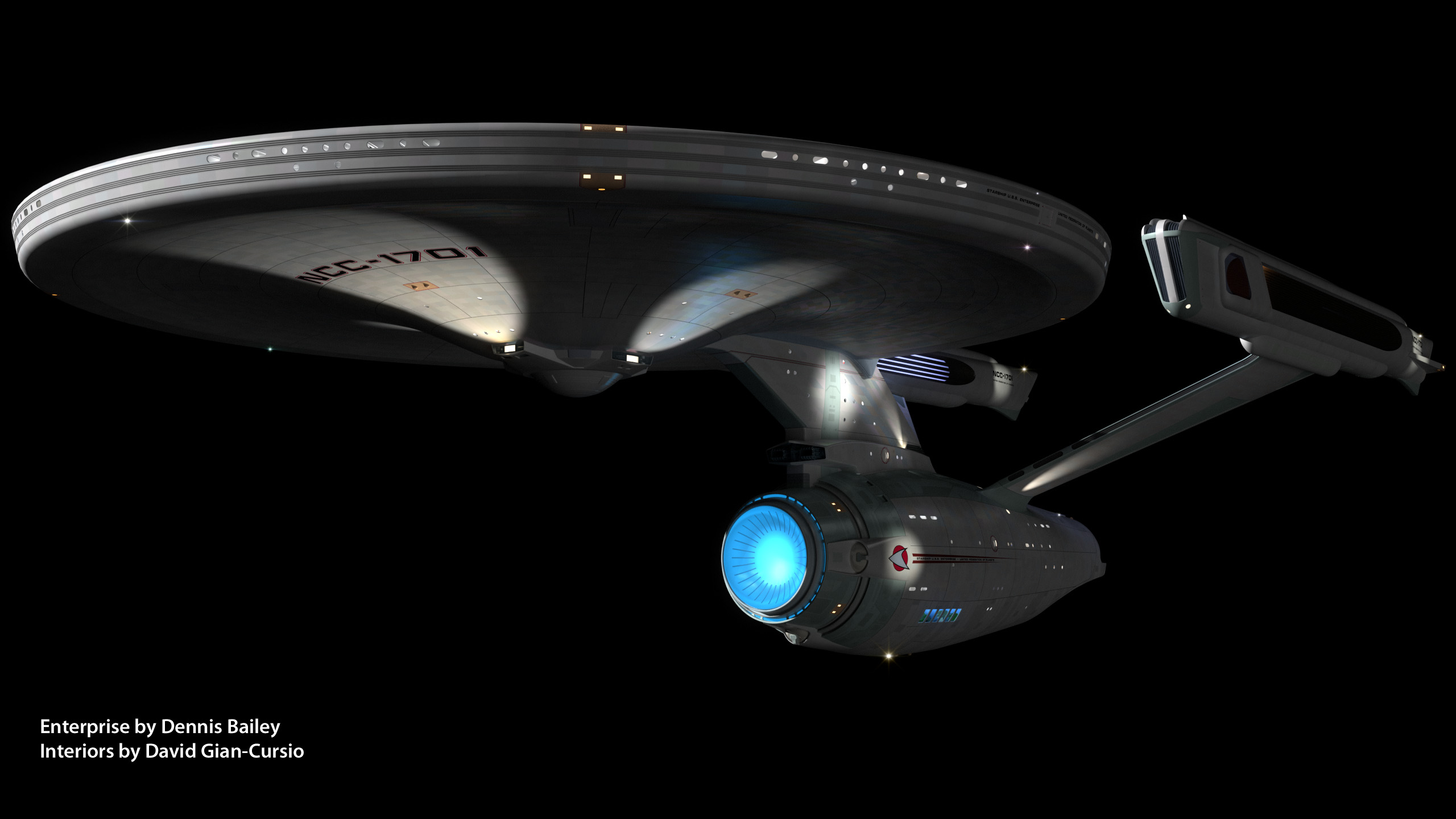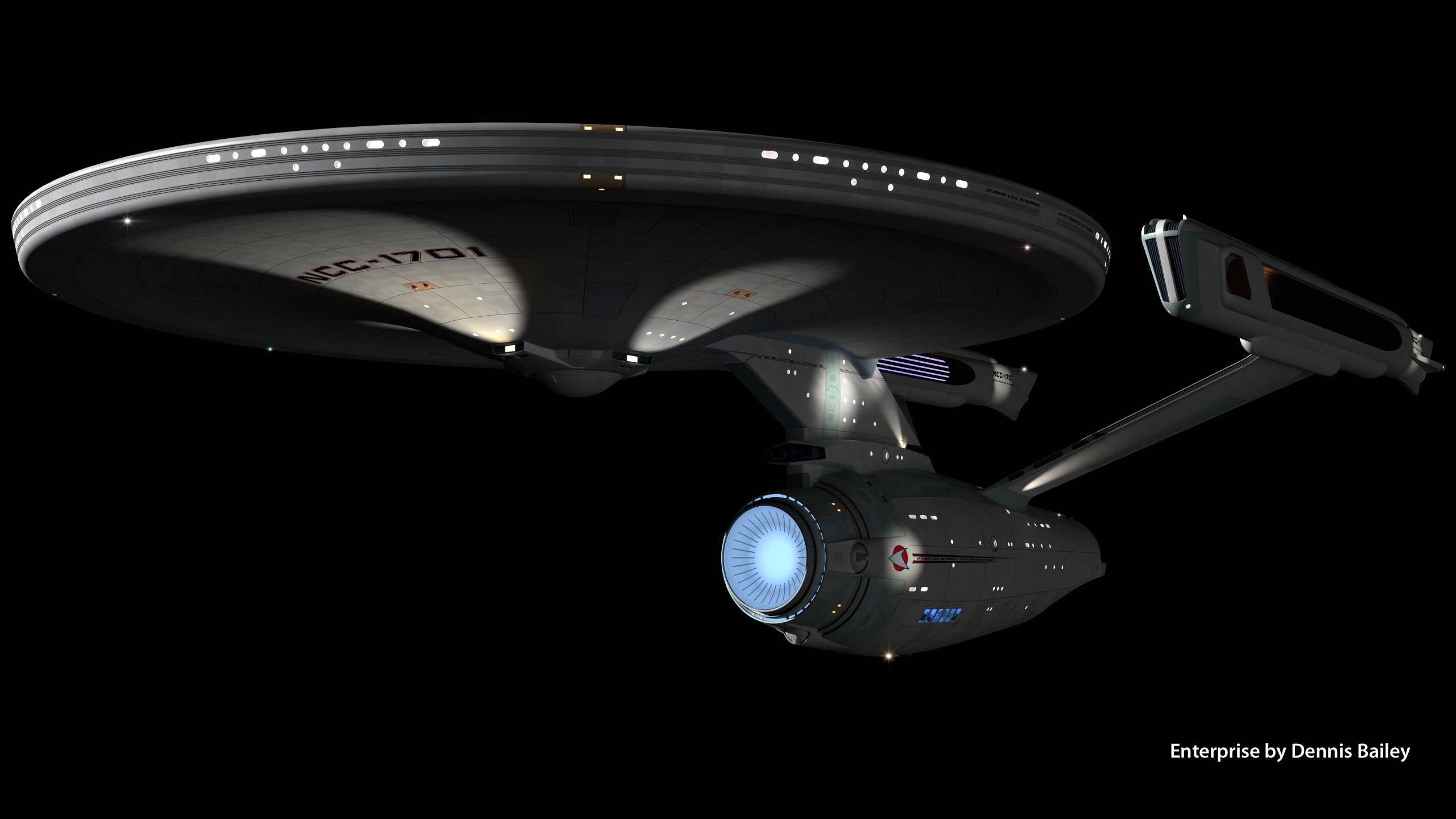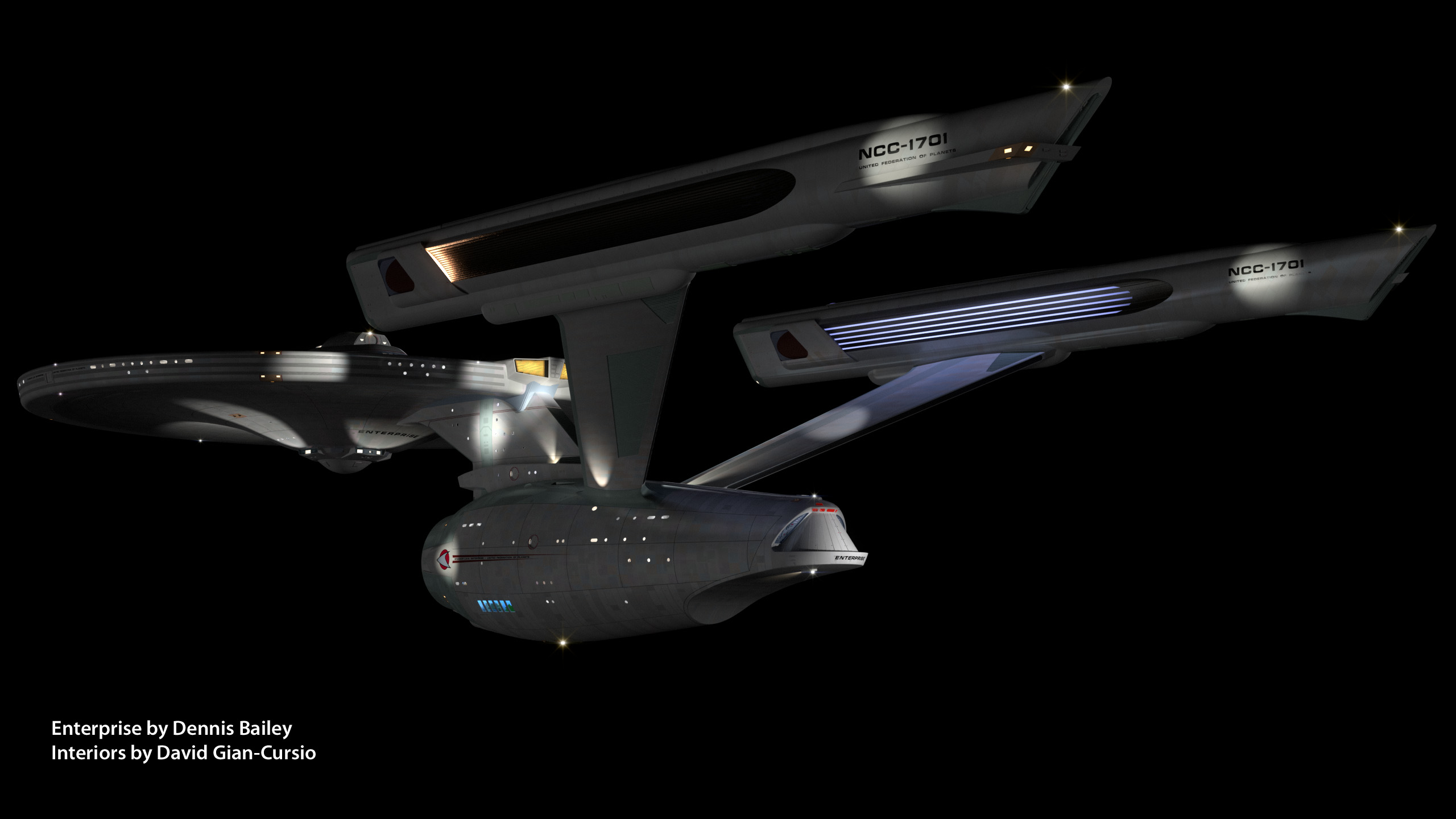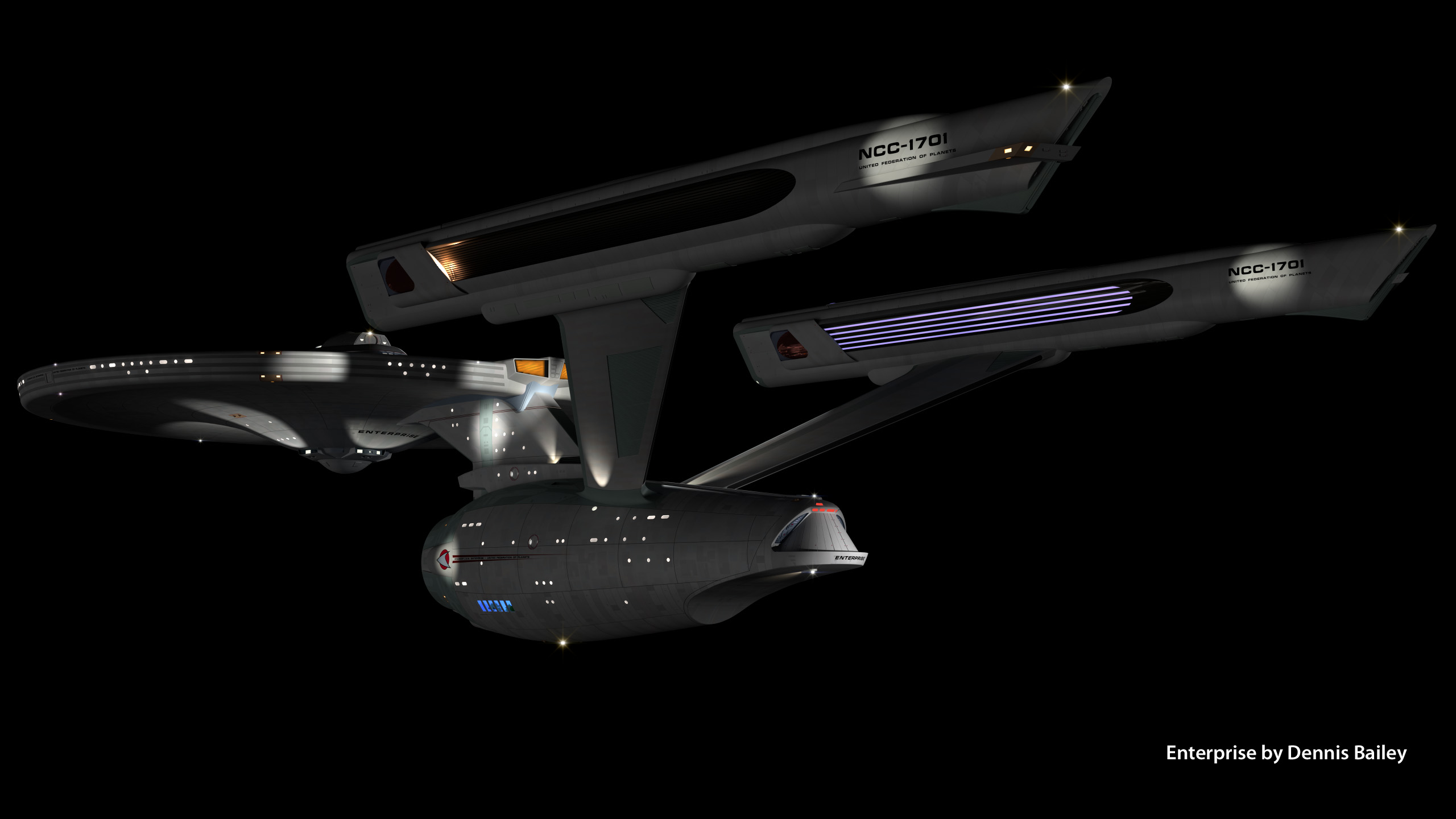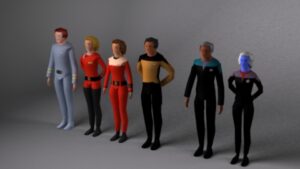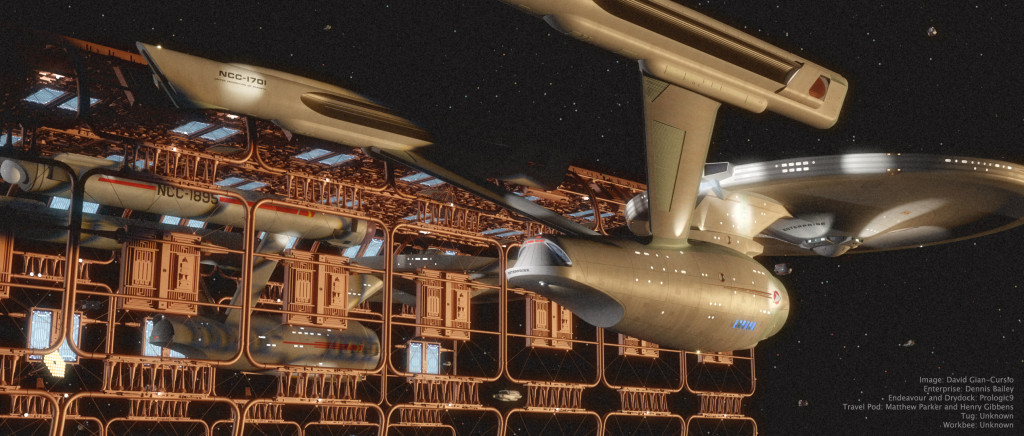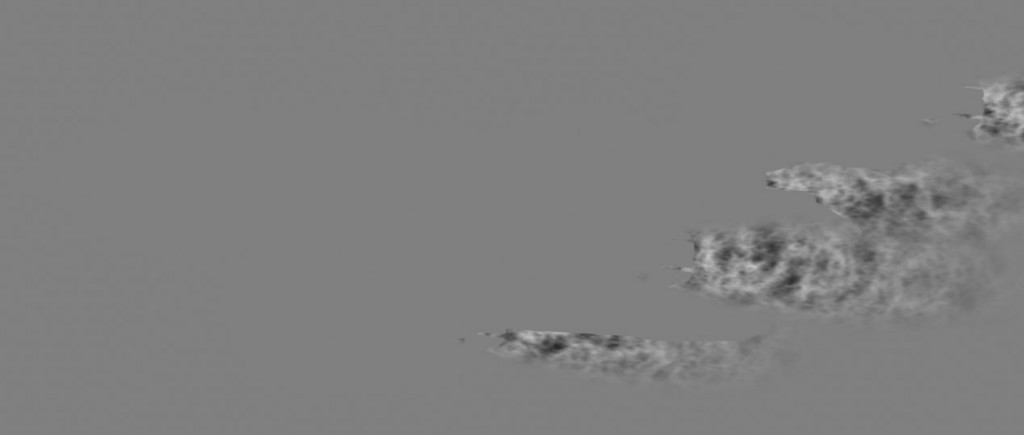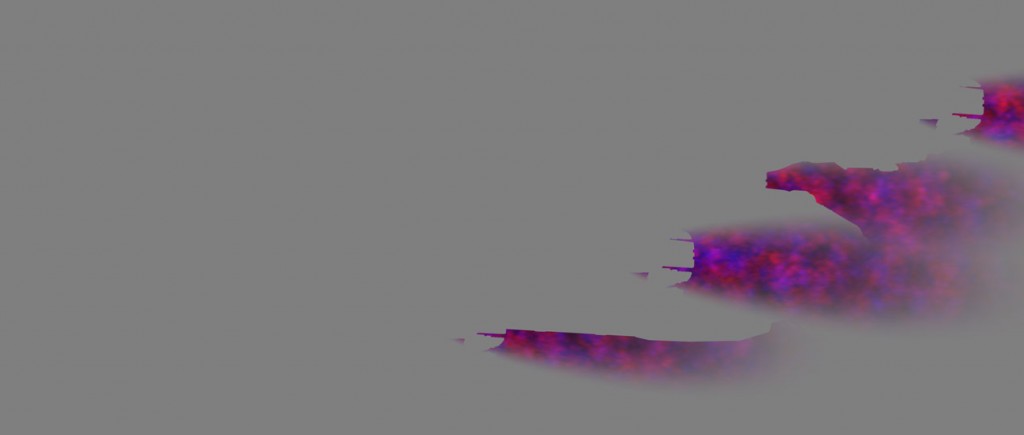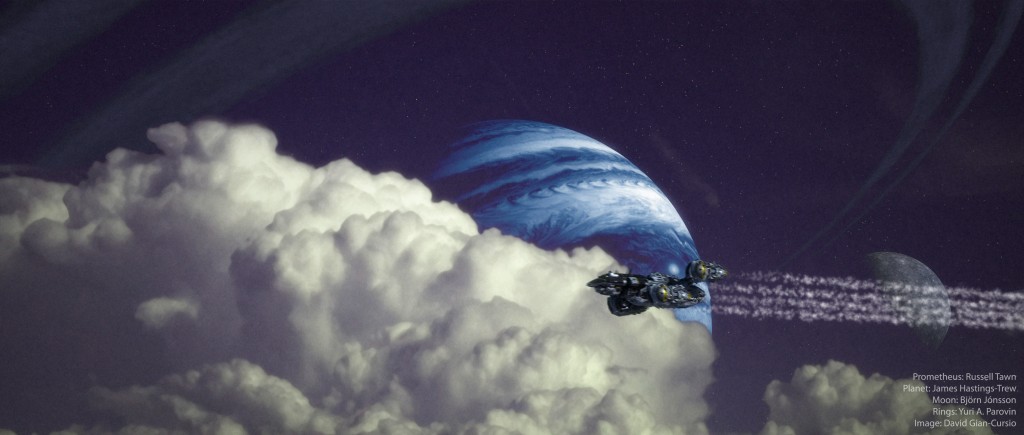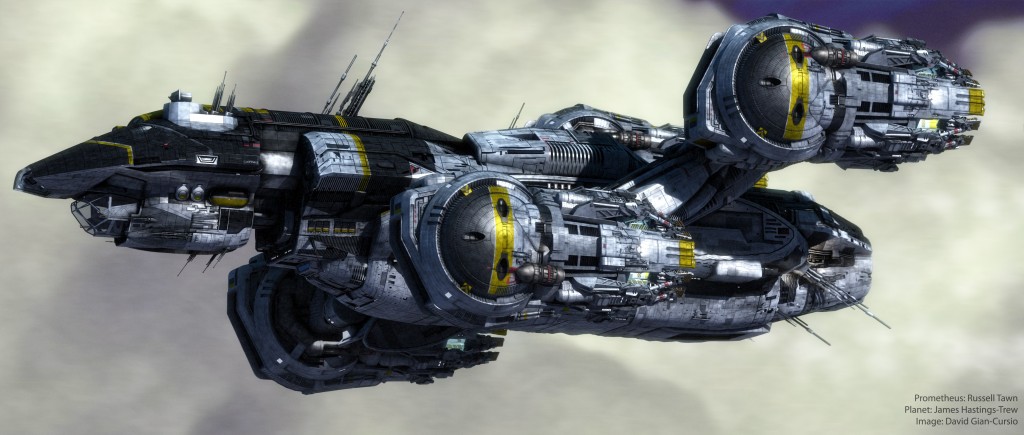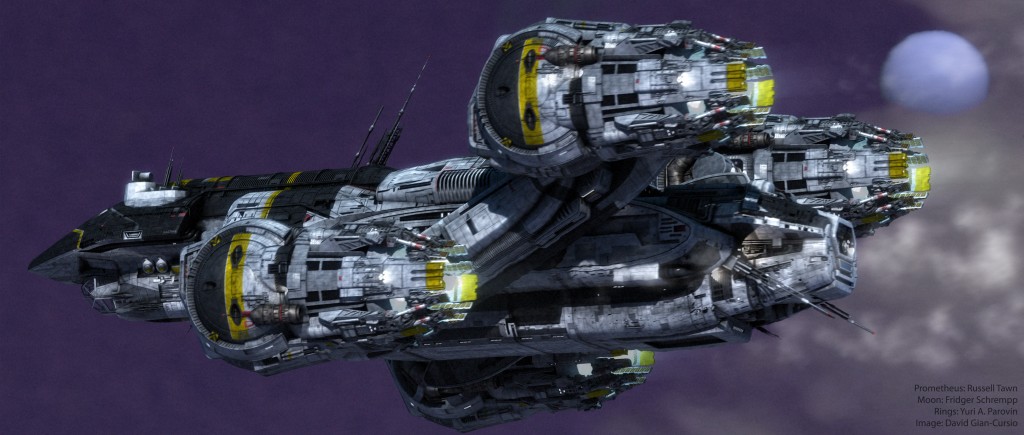Category Archives: Lightwave
Modeling Reel — Spring 2016
Archer-class Starship
Comparison of my model with Masao Okazaki’s original schematic drawing
Download Lightwave 2015 Version
The Archer-class starship is a small TOS-era scout designed by Masao Okazaki for the Star Trek: Vanguard novels created by David Mack, Dayton Ward & Kevin Dilmore, and Marco Palmieri. I began the model some time ago, after getting the idea of doing an opening credits sequence animation for the then-recently-announced Star Trek: Seekers spin-off series.
Warp Point Nine
After reading “Return to Tomorrow,” including a description of how the jump-to-warp effect was achieved in TMP (multiple long exposures, with the main trail coming from shooting a long exposure with blue fill lighting), I decided that I’d have to give it a shot myself, sooner or later.
Not long after, I tracked down an old render of the Enterprise-E I quite liked, “Apocalyptic Amenity,” since I kept being reminded it of it by the title of the Trek novel “Armageddon’s Arrow.” I even had it as my phone wallpaper for a while, and then felt awkward that I didn’t have any work of my own I could use on a phone, since I never do anything in portrait. I decided that I’d have to give it a shot myself, sooner or later.
So I set up a scene a week or so back. I looked up some iOS wallpaper templates (because it’s not just the screen, there’s also a margin for the parallax effect), and decided to render out a large square version that I could crop down for an iPhone, or leave as-is for an iPad, or crop to who knows what. I aligned it to leave a gap for the date and time, and so the lines of perspective would make a nice dynamic composition. Unfortunately, I didn’t know the Big iPad would become a real thing today, so it’s not quite large enough for that.
I did some test renders, and found I couldn’t get a long-exposure effect in a single render (at least, not by setting the motion blur distance to greater that 100%, attempting to have it encompass multiple frames of action). What I ended up doing was setting up an animation, setting the motion blur distance to 100% so each frame would touch to the next, and then rendering an image sequence for the length of the streak I wanted. After that, I brought them all into Photoshop as layers in a single document with additive blending, creating nice, smooth light trails.
The way I did the rainbow streaks was excessively painstaking. I took out the final warp-jump in the film, and set it as my background in Lightwave Layout. I modeled a single streak, and then painstaking rotated every one into place to match the pattern of the original after lining up my camera to the original shot. I don’t know if the streaks were in the same pattern for the other three warp shots in the film, and I don’t care. I’ll be happier not checking.
Refit-Enterprise by Dennis Bailey
Enterprise-Refit Interiors
Last year, around the time the 5K iMac and 2016 Ships of the Line calendar contest were announced, I got the idea of making window boxes for Dennis Bailey’s refit-Enterprise model so as to show more detail in the high-resolution images of the future. This has been my favorite science fiction design for as long as I can remember, so simple textured boxes were right out. I wanted to have furniture, even crew people visible through the windows. It took a while but, the results were worth it.
The layout of the rooms is based more-or-less on the Strategic Designs blueprint set, with some details from Mr. Scott’s Guide to the Enterprise and my own interpretations.
The model includes three swappable objects, based on locations that changed between the original Enterprise and the A. The officer’s lounge under the bridge can be replaced with a dining room, the large shuttlebay from TMP can be swapped for the enclosed version from TFF, and the swirling, gaseous warp core from the early movies can exchanged for the pulsing TNG model. The idea is that I could easily mix-and-match to represent other Constitution-class ships of varying configurations. I’m a big fan of the idea that sister-ships shouldn’t be perfectly identical except for the name painted on the front.
The whole configuration also comes in two versions, one in smooth earth-tones as the original Enterprise appeared in the first three movies, and one with more greeblies and silver and blue-gray coloring as the Enterprise-A appeared in The Undiscovered Country.
The crew people are very low-detail, little more than stick figures, but come in male and female, and have various skin tones and hair colors. I also set them up so it was simple to change the style of their uniforms, from the movie-era all the way to the various TNG-era uniforms.
The only drawback is that the lighting for the windows is a little dim compared to the official model, but I’ve been rendering in passes for years anyway, so it isn’t any trouble to brighten up the windows after the fact.
I included some small shots from inside the rooms but, to be clear, this is an exterior-only model. It’s no secret that interiors and exteriors for buildings and vehicles in film rarely match up perfectly, and these are no exception, with compromises made for the Recreation Deck, the Cargo Bay, and the height of all the rooms along the saucer’s edge, especially. Anyone building a model of the interiors of the movie-era Enterprise would have to ignore the outer shape of the ship to get those to look correct. The shuttlebay observation galleries being a half-deck below the window line on the exterior ship could be argued to be a feature of the “real” ship, but I’m not sure I like it.
After I finished the interior, I decided to gussy up the texturing on the main model, as well. I’ve been fiddling with the textures and lighting setup since I first downloaded it, but this time I set out to match the reflective, pearlescent paint job the studio model had for the first Star Trek movie. It ended up being surprisingly straightforward to get multi-colored highlights out of the model’s original textures, and adding reflectivity to the surfaces also required only a little trial-and-error to nail down.
I’ve rendered off shots from three angles so you compare Dennis’s original model to all the stuff I’ve done to it.
My version is on the left, the original on the right.
And here are some full-sized versions of my revamp for you.
You can see more work-in-progress images and read more details about the creation of model in this thread at Foundation3D. The model itself, along with an FBX conversion, and just the crew figures, is also available for download there. You’ll have to modify Dennis’s model to use them, which is why they’re in the “unfinished” section of F3D, but the Read Me explains what you need to look for.
You can also download them here:
Comparing Notes
“Comparing Notes” was one of three favorite Trek images I submitted for consideration in the 2016 Ships of the Line Calendar contest (The others were “Charting the Crucible” and “Quiet Night at the Office,” if you’re curious). This one was a winner! I’d hoped to have a chance to gussy up the render for the calendar, but I ended up only having time to make a couple small tweaks when I re-rendered it at print resolution. I adjusted the lighting so the blue and yellow banding in the shadows that I mention was less apparent, corrected a minor lighting problem on the Enterprise’s neck that made a harsh shadow, and added some very subtle window boxes to the Endeavour. I didn’t finish the window boxes for the Enterprise, though I have been working on them in the meantime. I also opened up the frame vertically since the aspect ratio of the calendar is taller than I usually make my pictures.
Having some time to return to Lightwave and a truly spiffy model of the TMP drydock, I decided to address an image bunny which had been itching me for a while. Namely, I’d wanted to do a take on this Andrew Probert painting with the Enterprise reflected pre- and post-refit. I ultimately remembered a photo from 1912 of the Titanic and her sister ship Olympic side-by-side at the repair yard and decided to do something similar.
In this case, the newly-upgraded Enterprise has returned to Earth so the engineers of the U.S.S. Endeavour can get some practical experience with the new designs as they begin to refit their own ship.
I colored the main light as if the sun had just set at that moment. It gives the picture a bit of a sepia tone. It also explains why the image is so grainy, because the photo had to be taken at a very high ISO since there was no more direct sunlight. I pulled the colors from this photo. In retrospect, I botched the lighting a little, as you can see banded shadows because I used two lights, one blue to represent the upper sky, and one red to represent the sky at the horizon. I am, however, very happy with the coherence (for want of a better term) of the image. A lot of times, the different eras of Star Trek can end up looking like totally different universes, and I feel like I avoided that in this one. There doesn’t seem anything at all odd about the original series and movie era sitting side-by-side.
I’m actually thinking I might be able to get a little more milage out of this picture. I may try out some alternate lighting setups.
General Reel — Winter 2014
Step From the Road to the Sea to the Sky
A quick animation using Foundation 3D’s favorite new spaceship. There wasn’t much excitement to this. A bit of noise added to the camera to give it some wobble (which YouTube insists on trying to “correct”), and the Jupiter map was recolored in the comp to be an alien planet. The cloud plate was a photo I shot with my phone and then enlarged with this on-line tool, though I still had to do some noise reduction in Photoshop.
The most interesting thing was a new idea I tried to do the heat haze coming from the engines, which I made using After Effects’ “Displacement Map” filter. I created a couple of blimp-shaped dummy objects in Lightwave which I placed inside and behind the engines of the ship. I colored the environment and the ship 50% grey for the render, and gave the gave the haze objects an animated black-and-white procedural noise texture. I had the transparency fade towards the rear and edges of the object with gradients.
The Displacement Map filter can actually drive horizontal and vertical seperately displacement based on separate color channels. I experimented with using colored noise when I rendered the still frames, but it would only make a real difference in an animation.
Credits:
Prometheus: Russell Tawn
Planet: James Hastings-Trew
Moons: Fridger Schrempp and Björn Jónsson
Rings: Yuri A. Parovin
I also have a trio of 4k stills for your viewing pleasure.

